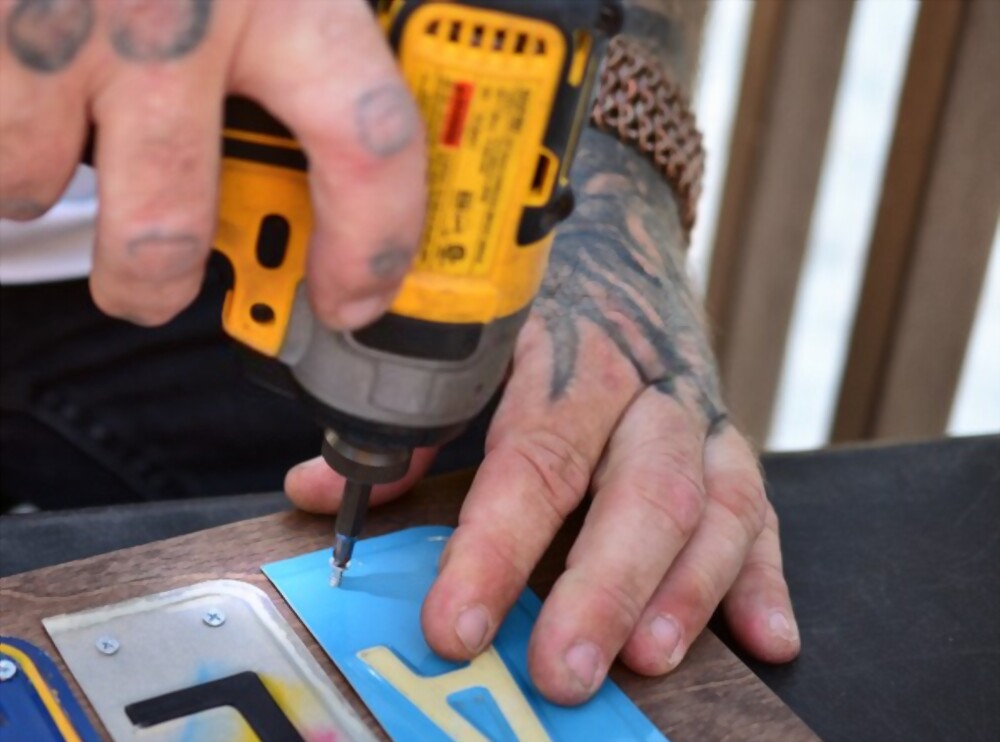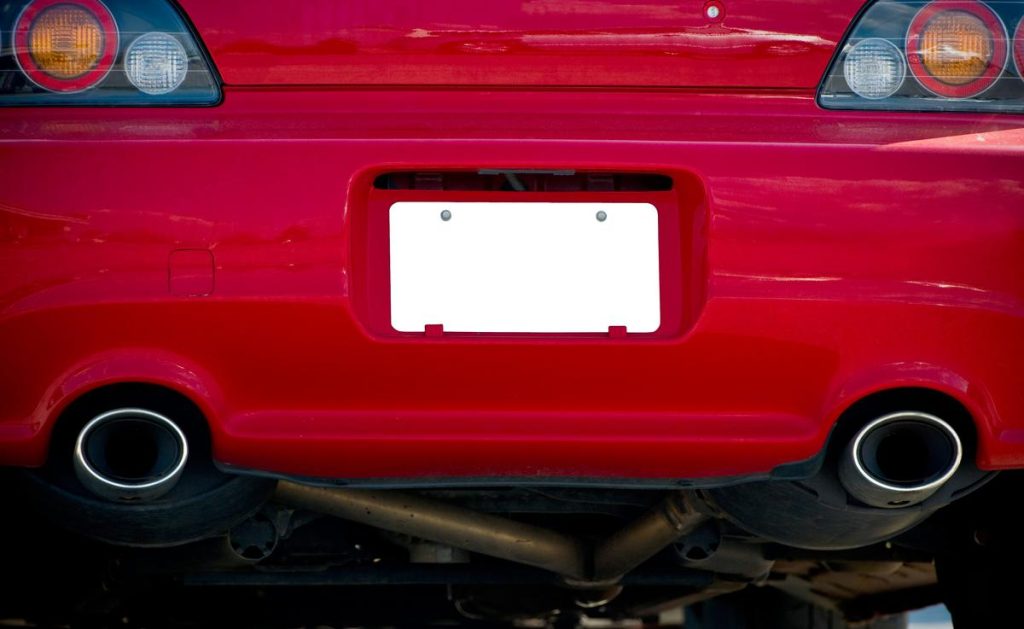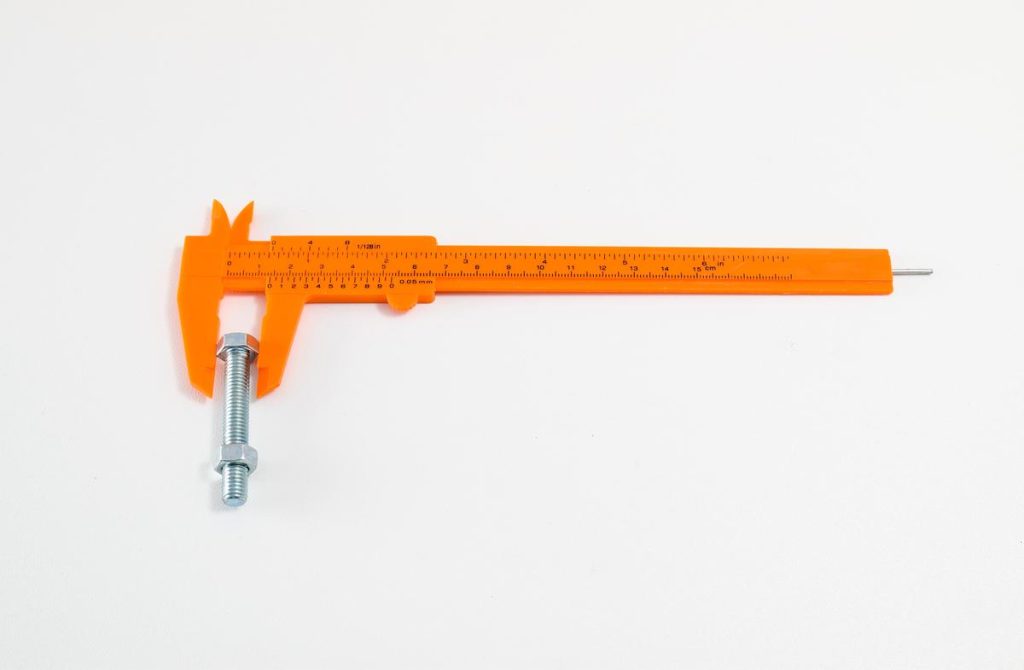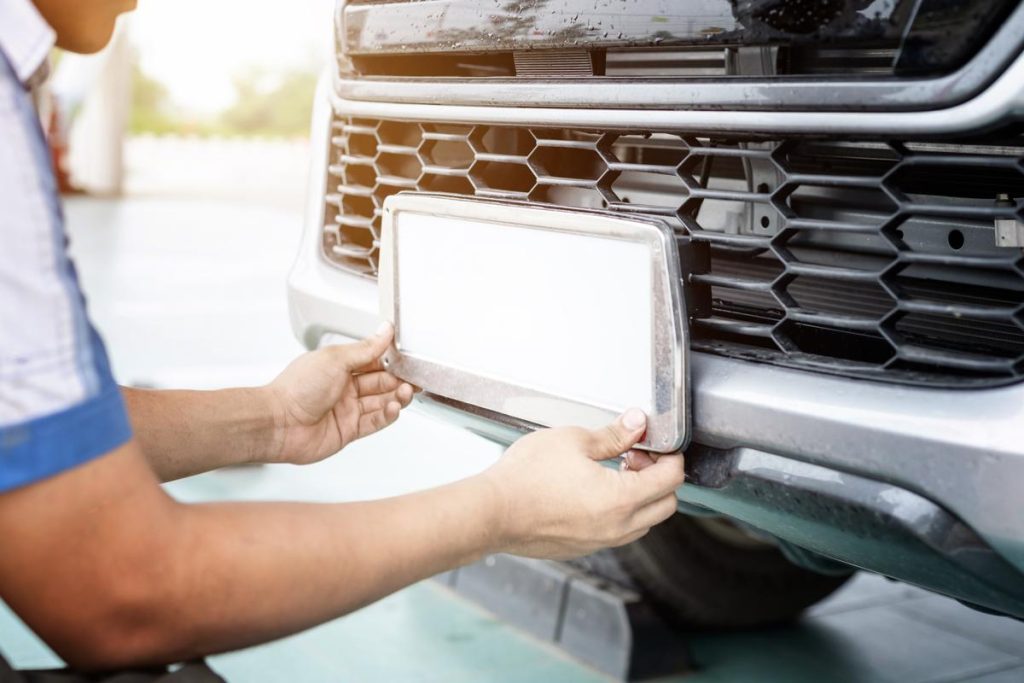As a driver, you may have never thought about the size of the screws attaching your license plate to your car. But did you know that choosing the wrong size can lead to a multitude of issues?
For most car brands, the standard size is a 1/4-14-3/4 inch self-tapping screw. These screws work well with vehicles that have nylon or plastic screw retainers. They’re easy to use and a good option for most drivers.
In this blog post, we’ll explore the importance of license plate screw sizes and why choosing the right one for your vehicle is crucial. From preventing damage to your car’s exterior to avoiding being pulled over by law enforcement, we’ll dive into everything you need to know to ensure that your license plate is securely and safely attached. So buckle up, and let’s get into it!
Standard License Plate Screw Sizes
The following is a list of the license plate screw sizes for the most popular car brands:
| Car Brand | License Plate Screw Sizes |
| Ford F-150 | 1/4-14×3/4 |
| Ford | 1/4″ x 3/4″ |
| Chrysler | 1/4-14×3/4″ |
| Chevrolet | #14 x 3/4″ |
| Cadillac | M6-1.0 x 16mm |
| BMW | M4.8 x 16mm |
| Audi | M6-1.0 x 16mm |
| Acura | M6 x 16mm |
| Mitsubishi | M6 x 1.0 x 10mm |
| Mercedes Benz | 6mm x 12mm |
| Mazda | M6 14-20mm |
| Lexus | 6.3mm x 25mm |
| Kia | M6 x 1.0 x 16-25mm |
| Jeep | #12 x 3/4″ |
| Hyundai | M6 x 1.0 x 16-25mm |
| Honda | 1/4-14-3/4″ |
| GM | #14 1/4″ x 3/4″ |
| Volvo | M6-1.0 x 16mm |
| Volkswagen | M6-1.0 x 16mm |
| Toyota | M6-1.0 x 25mm |
| Tesla | M5-0.8 X 8mm |
| Suzuki | #14 1/4″ x 3/4″ |
| Subaru | 1/4″ x 3/4″ |
| Ram Truck | 1/4-14-3/4” |
| Porsche | 1/4-14-3/4″ |
| Pontiac | M6-1.0 x 16mm |
| Nissan | 1/4-14-3/4″ |
Related: What Are The Standard License Plate Dimensions?
Common License Plate Screw Sizes

There are several common screw sizes used for license plates, including 1/4”, 5/16”, M6, and M8. Each size refers to the diameter of the screw, measured in inches or millimeters.
1/4” screws are commonly used for license plates in North America. They are a standard size that fits most vehicles. 5/16” screws are also used, but less frequently. These screws are slightly larger and thicker than 1/4” screws, providing more stability and resistance to vibration.
M6 screws are a metric size commonly used in Europe and other parts of the world. Similar to 1/4” screws, they have a diameter of 6 millimeters and are compatible with most license plates. M8 screws are slightly larger, with a diameter of 8 millimeters. They are less commonly used for license plates but may be necessary for larger or heavier plates.
When choosing screws for a license plate, it’s important to ensure they are the correct size for the vehicle and plate. Using the wrong size screws can damage the plate or the vehicle’s mounting points. It’s also important to use screws that are corrosion-resistant, as license plates are exposed to weather and road salt. Stainless steel screws are a popular choice for this reason.
Typical License Plate Screw Sizes
Take a look at the table below to get an idea of the typical license plate screw sizes that are commonly used in modern cars.
| Screw Type | Typical Sizes |
| 1012SS – Truss Head Phillips | #10 x 1/2 Stainless |
| 12818 – Hex Washer Head with Slots | 1/4 x 3/4 Stainless, Universal |
| 12932 – Pan head with slots | 1/4 x 3/4 GM, Stainless, and Universal |
| 14099 – Truss head with slots | 1/4 x 3/4 Universal zinc-plated |
| 1434 SS – Truss Head Phillips | 1/4 x 3/4 Stainless |
| 1939 – Hex washer with slotted head | 1/4 x 5/8 with 5/8 o.d. Washer, Ford # N800369-S2 |
| 6552 – Hex Slotted Washer Head | 1/4 x 3/4 plated with black zinc, universal |
| 6717 – Truss head with slots | 1/4 x 3/4 GM, Black, and Universal |
| 82-5503 – Washer Head, Slotted Head | 1/4 x 3/4 Zinc Plated Universal |
| 858SS – Pan Head by Phillips | #8 x 5/8 European, stainless, and universal |
| 90-6739 – Truss with slots | 1/4 x 5/8 Zinc Plated-Blunt Point, Universal |
| 903 – Hex head with slot | #12 x 3/4 Zinc Plated, Subaru, and Universal |
Factors to Consider When Choosing Screw Sizes

When it comes to choosing the right screw size for license plate installation, there are a few factors that need to be taken into consideration. These factors include the make and model of the vehicle, the material of the license plate and mounting bracket, and the local regulations and laws governing license plate installation. Let’s explore each of these factors in more detail.
Vehicle Make and Model
Different vehicles have different license plate mounting options. Some vehicles have pre-drilled holes where the license plate can be directly screwed onto the bumper or grille, while others require the use of a mounting bracket. The mounting bracket may be attached to the front bumper or the rear trunk or hatch. Before purchasing screws, it is important to determine the type of mounting system your vehicle requires.
Material of License Plate and Mounting Bracket
License plates and mounting brackets can be made of various materials, such as plastic, metal, or composite. The material of the license plate and mounting bracket can influence the choice of screw size. For instance, plastic license plates and brackets are less rigid than metal, which means that they require shorter screws. On the other hand, metal license plates and brackets require longer screws that can penetrate the thicker material without falling out.
Local Regulations and Laws
Different states and countries have their own regulations and laws regarding the installation of license plates. These regulations can include specifications on the number of license plates required, the location where the plates must be fixed, and the size and type of screws that can be used. It is important to check the local regulations before buying screws to make sure that the chosen screws comply with the legal requirements.
How to Measure Screw Sizes?

Screws are an essential component in any DIY or construction project. They are used to join materials together and come in various sizes and types. Knowing how to measure screw sizes accurately is crucial for choosing the right screw for your project. In this article, we will provide you with a detailed guide on how to measure screw sizes and the tools required for this task.
Tools Needed to Measure Screw Sizes:
1. Screw Gauge – A screw gauge is the most accurate tool for measuring screw sizes. It is a handheld tool that measures the diameter of the screw thread, so you can identify the correct metric or imperial size. Screw gauges are available at most hardware stores and online retailers.
2. Calipers – Calipers are another tool that can be used to measure screw sizes. They are not as accurate as a screw gauge, but they can give you a good estimate of the screw diameter. Calipers are also available at most hardware stores and online retailers.
Step-by-Step Guide on How to Measure Screw Sizes:
1. Determine the type of screw – Firstly, you need to identify the type of screw you are measuring. Screws come in different lengths, materials, and shapes, so choosing the right type of screw is essential before you begin measuring.
2. Measure the length of the screw – If you need to measure the length of the screw, use a tape measure or ruler. Place the screw on a flat surface and measure from the top of the screw head to the tip of the screw.
3. Measuring the thread diameter – This is the most critical measurement when it comes to screwing sizes. Place the screw gauge or caliper over the screw thread. If you are using a screw gauge, look for the slot that matches the thread pitch of the screw. This will indicate the diameter of the screw thread. If you are using calipers, measure the distance across the widest part of the thread.
4. Matching the screw size – Once you have measured the screw diameter, you can match it to the appropriate screw size in metric or imperial units. The size of the screw will be indicated by either a numerical value or a letter. For example, a screw gauge measurement of 3.5mm would correspond to a metric screw size of M3.5.
How to Replace License Plate Screws?

Replacing license plate screws is a straightforward process that can be completed with just a few tools. Here are the steps to replace license plate screws:
Materials:
- New license plate screws
- Screwdriver or power drill with screwdriver bit
- Optional: lubricating spray (e.g. WD-40)
Steps:
- Obtain new license plate screws that match the size and thread pattern of the old screws.
- Use a screwdriver or power drill with a screwdriver bit to remove the old screws from the license plate. Turn the screws counterclockwise to loosen them and remove them from the license plate.
- If the old screws are stuck or difficult to remove, you can apply a lubricating spray like WD-40 to help loosen them. Let the lubricant soak in for a few minutes before attempting to remove the screws again.
- Once the old screws have been removed, position the new screws in place and insert them into the holes in the license plate. Turn the screws clockwise to tighten them, careful not to overtighten and strip the threads.
- Use a screwdriver or power drill to ensure the screws are snug and secure.
- Double-check that the license plate is level and straight before tightening the screws completely.
And that’s it! You have successfully replaced your license plate screws.
FAQs
What size drill bit for license plate screws?
The recommended size for a drill bit for license plate screws is 1/8 inch.
What size bolt is a Hyundai license plate?
The size of the bolt for a Hyundai license plate may vary depending on the model, but it is typically a 6mm or 8mm bolt.
What size screw is a 2008 Honda Accord license plate?
The size of the screw for a 2008 Honda Accord license plate is also typically 6mm or 8mm.
What size screws are on the Lexus license plate?
The size of the screws on a Lexus license plate may also vary depending on the model, but it is typically a 6mm or 8mm screw.